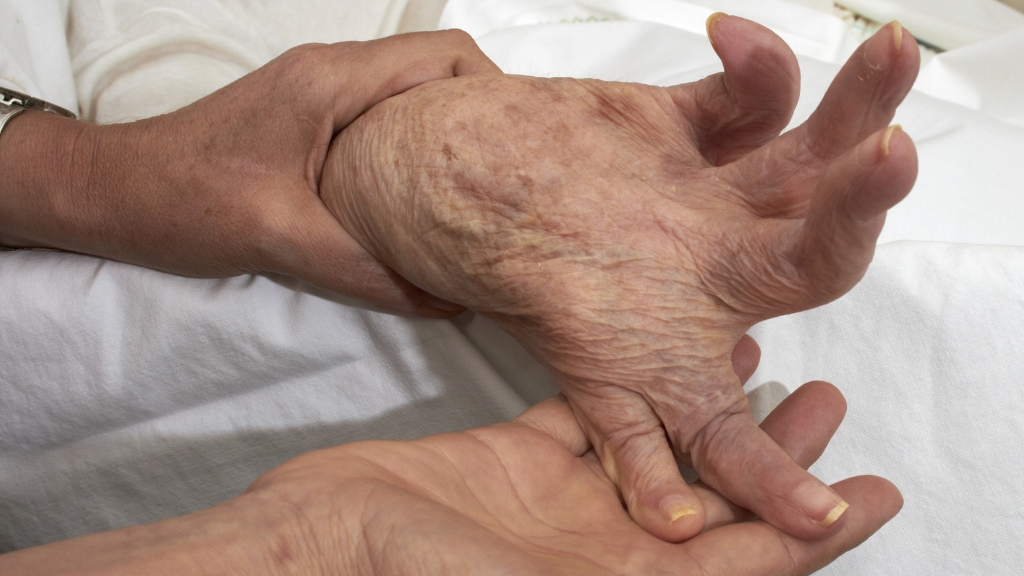Innovative Research May Make Predicting Rheumatoid Arthritis a Reality
7 minute read
Quite often, knowing about something in advance can change the eventual outcome. This is truly the case with many medical conditions, such as Rheumatoid Arthritis (RA). We’ve seen great medical advances in the treatment of and even preventing certain diseases once we’re able to predict that a person is prone to getting the disease.
It just may be that rheumatoid arthritis sufferers will benefit from early prediction in the future. The 2018 annual conference of the European League Against Rheumatism (EULAR) approached this topic with two different studies that looked into molecular changes before known onset of the disease.
Both studies came up with some interesting results that could have a positive influence on people with RA.
What Is RA?
Let’s take a minute to rewind a little and discuss what RA is. Rheumatoid Arthritis is an autoimmune disorder in which your body mistakenly begins attacking the synovium as though they were an invading illness. The synovium is a lining of membranes that surround your joints.
| Related: Autoimmunity Recovery: The Root Causes of Inflammation |
When your body attacks this lining, inflammation occurs and thickens the area, which can destroy cartilage and bone. In addition, your corresponding tendons and ligaments weaken and stretch.
In severe cases of RA, the patient can develop misshapen joints, especially in the small joints of the fingers and toes.

Most people associate RA with joints, such as those in the hands, feet, and knees. And this is typically where RA presents, but it can also cause significant damage to other bodily systems such as a patient’s skin, eyes, lungs, heart, and blood vessels.
RA Risk Factors
The Mayo Clinic lists the following RA risk factors. While this list can be very useful in helping individuals determine if they are at risk for RA, it is not as useful as a test that could measures molecular changes. The risk factors include:
♦ Sex: Women are more likely to get RA than men
♦ Age: RA most often begins between the ages of 40 and 60
♦ Family history
♦ Smoking
♦ Environmental exposure: Asbestos or silica exposure may increase your chance of getting RA
♦ Obesity
Most of these factors serve as a good footnote and give you a place to start if you develop constant and persistent joint pain, but they are not predictive and certainly not diagnostic.
| Related: 9 Everyday Surprises When RA Enters Your Life |

Many of these risk factors also crop up as indicators in other diseases as well, making diagnoses more difficult. With a predictive test for RA, a lot of guesswork will be eliminated.
Predicting RA
The data presented at the 2018 EULAR Conference supported the notion that being able to predict RA could lay the foundation for early interventions that could possibly prevent the onset of RA. It also supported contentions that early predictions can lead to a more tailored treatment plan that pulls genomics into the mix.
| Related: 9 Everyday Surprises When RA Enters Your Life |
The first study took a deeper look at the synovial tissue. As noted, synovial tissue is often a target of RA and is typically damaged by this disease in the long run.
This study examined tissue samples from the knee joints of 67 people who were believed to be at high risk for developing RA. The participants were then followed to see who developed RA.
A genome-wide exploratory study profiled 13 of the 67 participants to see if there were any gene signature changes taking place. Dr. Lisa van Baarsen, Principal Investigator at the Amsterdam Rheumatology and Immunology Center states that the RA study results clearly showed molecular changes in synovial tissue prior to onset of arthritis.

The second study examined B-cell receptors (BCR), which naturally occur in the blood and work with the immune system. It’s recently been discovered that dominant B-cell receptor clones in peripheral blood can predict the onset of RA.
| Related: Rose Hips: How This Fruit Can Provide Natural Arthritis Relief |
This second study looked deeper into the discovery to see if the BCR biomarker had greater predictive power than other biomarkers. The results concluded that the number of dominant BCR clones was significantly increased in RA-risk individuals who developed the disease within three years of the test.
How Does Predicting RA Help?
Obviously being able to predict RA would be a great benefit to people who not only show some risk characteristics, but are likely to get the disease. In the future, treatment plans can be created specifically for that person based on their genetic response and predicted reactions to different treatment modalities.
Rheumatoid arthritis is a debilitating disease that continues to take a toll on the physical well-being of the patient. After time, the body begins to break down and, as discussed previously, there can be physical deformities in loosened tendons and ligaments that cannot be repaired. In addition, chronic joint pain can be very debilitating and limiting.

Being able to predict who is likely to get RA gives medical professionals a head-start on treatment programs that could not only delay the onset of the disease, but potentially, prevent it altogether. Because RA is a long-term disease that worsens over time, it’s vital for patients to get ahead of their diagnosis and do all that they can to prevent the disease or, at the very least, delay its onset.
The Bottom Line
Today treatment for RA patients begins once the diagnosis of RA is given. The goals currently involve stopping inflammation and putting the disease in remission, relieving symptoms, preventing damage, improving physical function and reducing long-term complications.
It’s a game of catch-up for patients and medical professionals. But with predictive tools the game changes and the advantage goes to the patient as they work to stay ahead of RA and lead a healthy and happy life, free from arthritic pain and complications.












